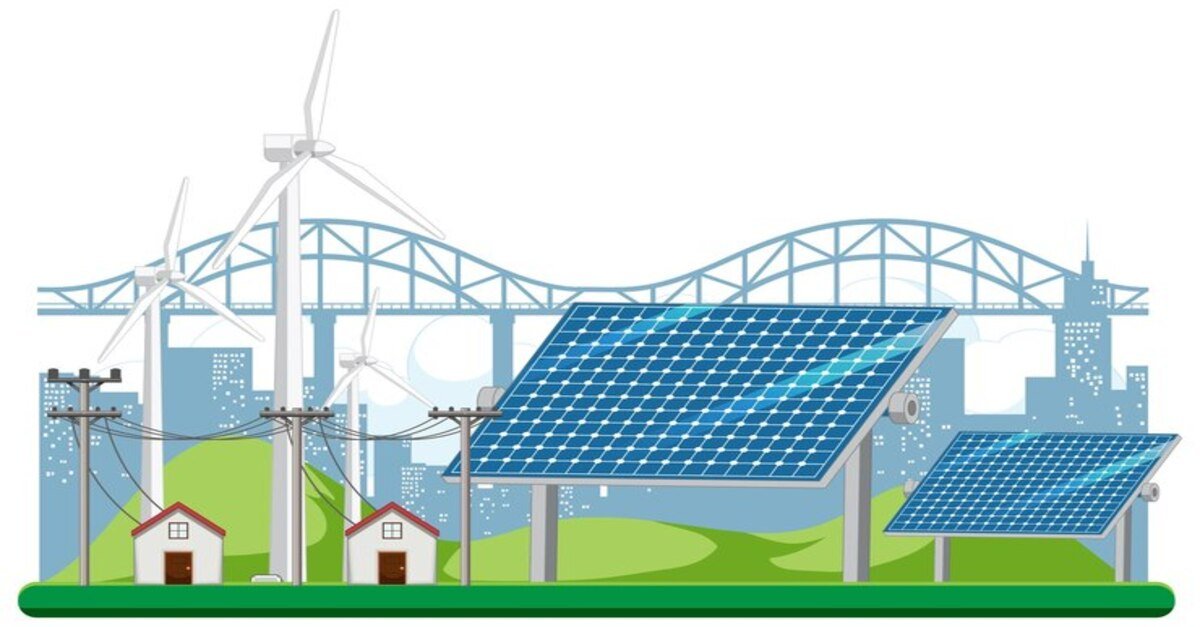Since people, companies, and governments have realized the advantages of solar electricity, it has grown in popularity and usage. The process of using solar energy to create heat or electricity is known as solar power. Solar panels, which are made to capture sunlight and transform it into valuable energy, are used to do this. Concentrated solar-thermal power uses sunshine to generate heat, whereas photovoltaics (PV) is the conversion of sunlight into electrical power.
What Are Solar Panels?
Photovoltaic cells are typically constructed of silicon and used in solar panels. These solar cells generate electricity by enabling sunlight to free electrons from atoms. After being captured, this electricity is transformed into direct current (DC) electricity, which may be utilized to run establishments such as stores and offices.
What Are Solar Farms?
Large-scale solar panel installations that produce electricity are called solar farms. These farms, which can span several to hundreds of acres, are essential to supplying renewable energy to residences, companies, and local communities.
How Does Solar Power Work?
Solar photovoltaic (PV) and solar thermal energy harvesting are the two main energy harvesting techniques in the vast field of solar energy. The foundation for using solar energy to meet our demands for heating and electricity comprises these two systems.
Solar Photovoltaic (PV)
The photovoltaic effect is the core idea of solar photovoltaic technology. Photons, or light particles, interact with materials like silicon to release electrons, resulting in an electrical potential that may be used to power solar cells. These solar cells produce a direct current (DC) when arranged in arrays to make solar panels. An inverter converts the DC into an alternating current (AC) for daily use.
Solar Thermal
Solar thermal systems, on the other hand, use the heat energy from the sun to produce hot water or power. Usually, concentrated solar power (CSP) is used, which increases light intensity and warmth by focusing a vast area of sunlight onto a smaller area through mirrors or lenses. Large-scale electricity production can subsequently be achieved using this concentrated energy to power a heat transfer system or a traditional steam turbine.
Solar PV vs. Solar Thermal Panels
Both systems use solar energy but in different ways and for other purposes. Solar photovoltaics (PV) directly convert sunlight into electrical energy to generate electricity. Frequently used in utility, business, and residential settings. On the other hand, solar thermal heating is more uncomplicated because it absorbs sunlight to heat liquids like water. Usually utilized in large-scale power plants or for home hot water consumption.
Systems Integration Basics
System integration makes smoother energy transfer possible by integrating solar power systems into the current electrical grid. This procedure entails monitoring and controlling the flow of electricity to provide a steady and dependable power supply.
Soft Costs Basics
The non-hardware expenditures connected with setting up and keeping up a solar power system are referred to as soft costs. These consist of marketing charges, labour costs for installation, and permit fees. Reducing soft costs is essential to increasing the affordability and accessibility of solar power for a larger population.
Going Solar Basics
Installing a solar power system in your home to produce electricity for personal use is known as “going solar.” This can entail utilizing community solar projects, ground-mounted systems, or roof-mounted panels.
Community Solar Basics
Without solar panels on their land, towns, corporations, and individuals can obtain solar power through community solar. To make going solar more affordable and accessible, a shared solar installation that several subscribers can utilize must be developed.
Solar Industry Basics
The solar sector is changing quickly, opening up new avenues for innovation and job creation as more nations and companies invest in solar energy. The industry is anticipated to expand and contribute significantly to our energy needs.
Pros and Cons of Solar Power
Like every energy source, solar power has benefits and drawbacks that must be considered.
Pros
- Renewable and Sustainable: There is an almost limitless energy supply because the sun is an unbuffered resource.
- Emissions-Free: One of the cleanest energy sources is solar power, which produces electricity without releasing greenhouse gases or other pollutants into the atmosphere.
- Low Operating Costs: Once established, solar systems require little maintenance, which results in long-term cost savings and stable energy rates.
Cons
- Intermittency: Solar energy output depends on the weather and time of day, which presents issues for power supply and system stability.
- Space-Intensive: Large-scale solar farms require substantial land, which can lead to conflicts with existing land use and environmental considerations.
- High Upfront Installation Cost: While solar technology costs have decreased significantly. The initial investment for a system can still be substantial.
Conclusion
Solar power is one renewable energy source that is expanding quickly and has the potential to influence our current energy systems significantly. We can continue to encourage solar power development in our communities and make educated judgments regarding its use if we have a basic grasp of it. We might witness an even more significant change in favour of solar power as a practical and sustainable energy source as costs come down and technology improves. So, let’s continue investigating and discovering more about this fantastic resource nature has given us! Let’s maximise the sun’s energy to leave a more sustainable and green environment for future generations. Solar power has a bright future.
